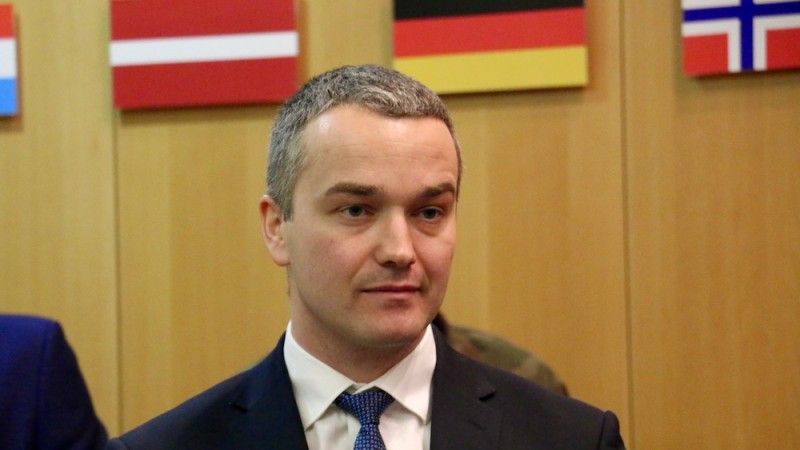PGZ Opens a Subsidiary Branch in Hungary

“We have been talking to Hungary since some time now. Our recent visit to Budapest has confirmed our belief that establishing a permanent representation of PGZ to Hungary would be a natural next step for us” – stated Błażej Wojnicz, President of the Management Board at the PGZ S.A. company. Wojnicz accompanied the Polish PM, Mateusz Morawiecki, visiting Hungary in an official manner for the first time.
"PGZ claims, summing up the visit to Hungary, that the President of the company also mentioned a closer collaboration between the Central European defence industries." - President of the Management Board of the Polish Armaments Group, Błażej Wojnicz.
PGZ claims, summing up the visit to Hungary, that the President of the company also mentioned a closer collaboration between the Central European defence industries.
"Within the context of the actions undertaken by some of the players present on the global arms market, steps as such could create an opportunity to enhance the competitiveness of the Central European defence industry offer." - President of the Management Board of the Polish Armaments Group, Błażej Wojnicz
Wojnicz was also to add that, yet again, he has invited the representatives of the Hungarian defence industry, and of the Hungarian military as well, to Poland. The goal would be to demonstrate the capabilities of the artillery systems offer, including the Krab and Rak platforms. Moreover, PGZ is interested in showcasing the individual equipment used by the Polish soldiers. The Group is also working on organizing a similar presentation in Hungary.
The recent months have seen a major intensification of joint efforts made by the PGZ Group and its Hungarian partner. A series of meetings between the PGZ Group and representatives of the Hungarian MoD took place during the MSPO event organized in Kielce back in September. The guests got acquainted with the PGZ Group’s offer and portfolio.
The first visit made by the HM ARZENAL and the representatives of the Hungarian MoD at the seat of the PGZ Group took place on 13th October this year. The delegation was headed by the Hungarian Armed Forces' Armament Director, Gáspár Maróth PhD. The talks were related to the possible options of collaboration within the defence sector. Hungary, back then, expressed its interest in acquisition of the Polish-made artillery, anti-aircraft and anti-tank systems.
The Hungarian MoD and defence industry representatives also visited the PGZ companies in November and December 2017. The delegates were hosted at MESKO or at the ZM Tarnów facility, where they could get acquainted with the manufacturing capabilities and the offered products. The visits could have been seen as a consequence of the decision made by Budapest to expand the Armed Forces quantitatively and qualitatively. Hungary also created a branch modelled after the Polish Territorial Defence component.
During the recent period, Bydgoszcz-based Nitrochem company, supplying the explosives, was the most active entity of the PGZ Group working on the Hungarian market, with the WZU facility to follow. WZU is an entity dealing with overhauls and modernization of air defence systems and technology transfer that would allow the Hungarians to maintain the 2K12 Kub SAM systems in an ongoing manner.
Hungary Reinforces its Armed Forces
Following the outbreak of war in Ukraine, Hungary decided to increase its defence expenditure. As NATO data suggests, in 2014 the defence budget GDP share was as low as 0.87%. This year the value is to go up to 1.05%. In January 2017 the MoD announced a plan to increase the defence expenditure up to the level of 2 of GDP until 2026. Furthermore, the government also adopted a modernization plan covering the upcoming decade back then.
Most of the equipment operated by the Hungarian Armed Forces dates back to the Warsaw Pact era. For instance, the Hungarians have no ATGMs of Western origin at their disposal. It may be mentioned here, for the sake of comparison, that Poland has the Israeli Spike-LR ATGMs included in the inventory of its military. The quantitatively limited fleet of the main battle tanks is based, primarily, on the standard T-72M1 vehicles.
Up until recently, the most significant modernization programmes included introduction of Gripen multi-role jets and Mistral M2 SAMs, with the latter weaponry being upgraded up to the Mistral M3 standard. Considering the expansive requirements as well as the plans to increase the defence expenditure, the Hungarian market may be an interesting target for the Polish defence industry. Land forces and air defence systems are among the priorities pursued by the Hungarian MoD. Acquisition of multi-role helicopters is also a part of the plans, however so far Hungary is maintaining the Mi-17 fleet, to maintain the basic capabilities.



